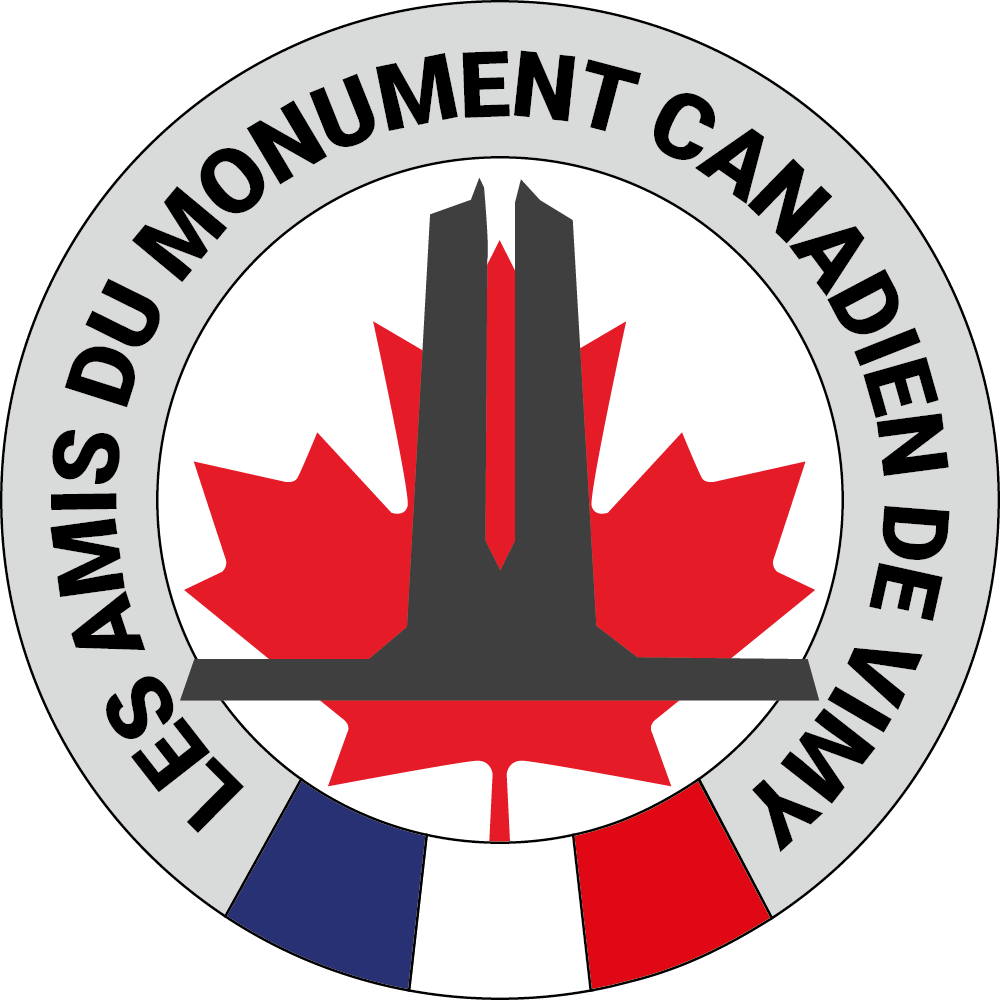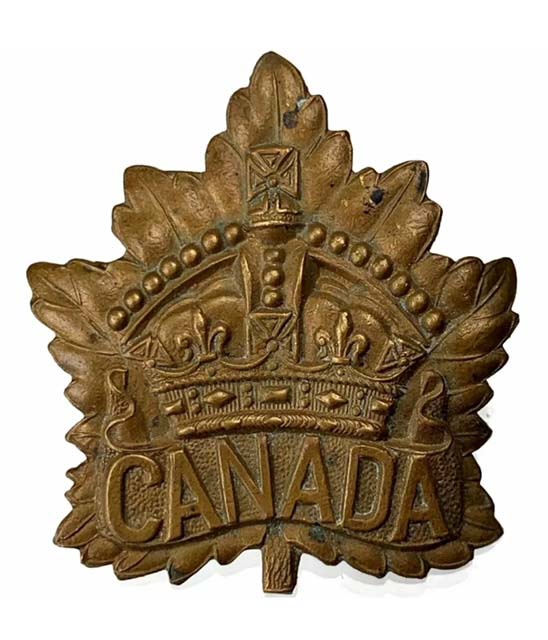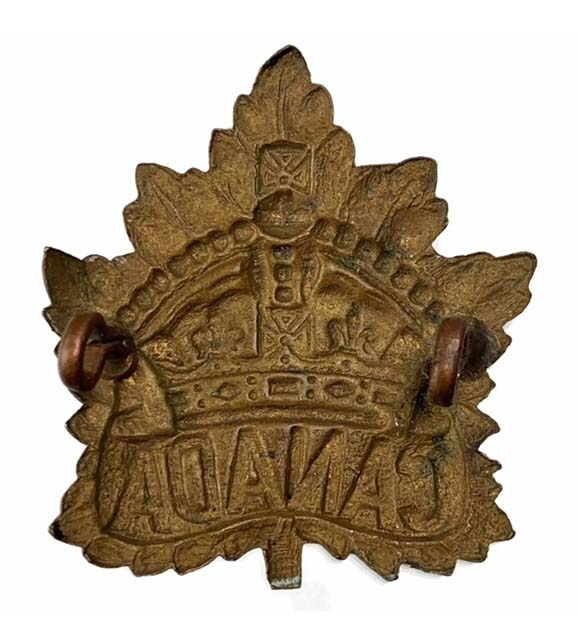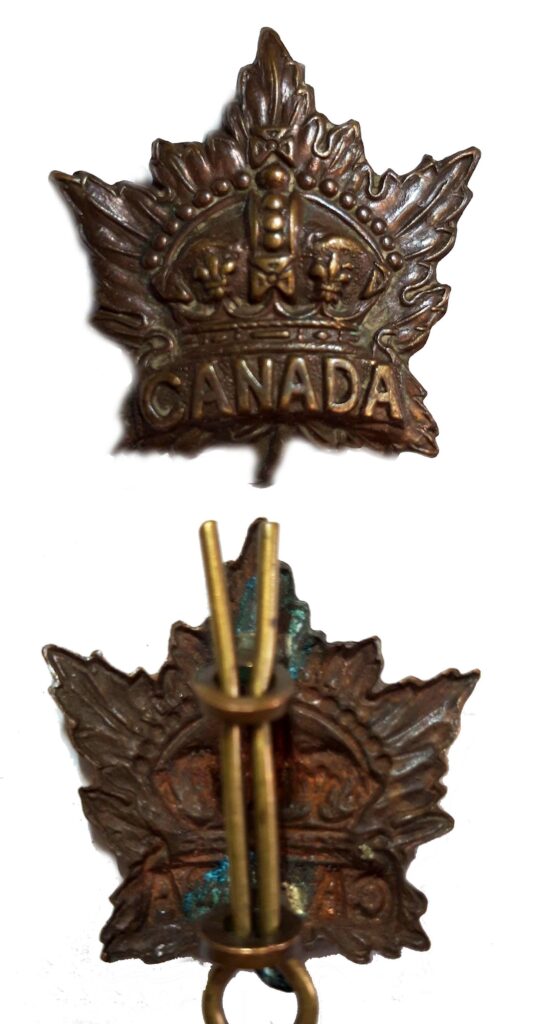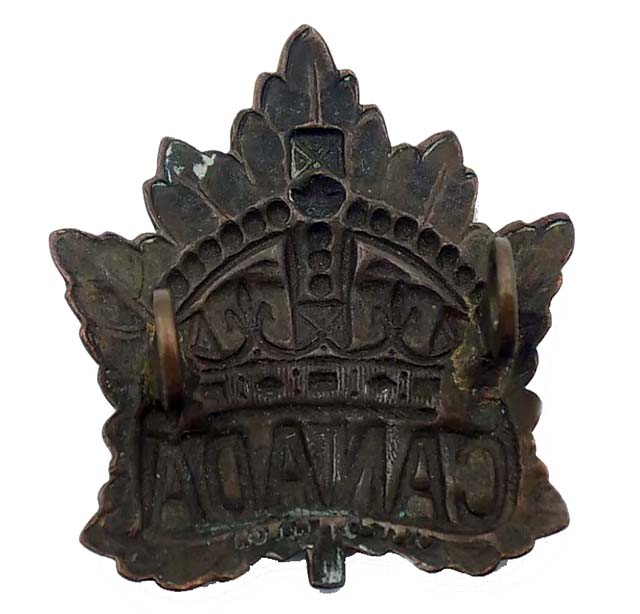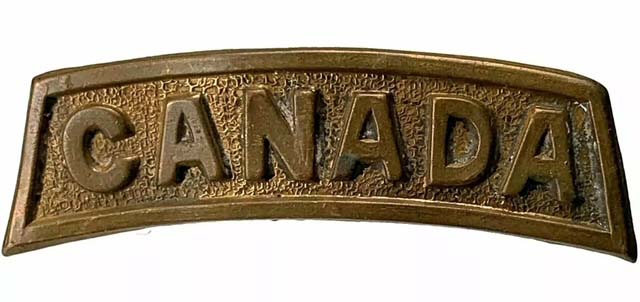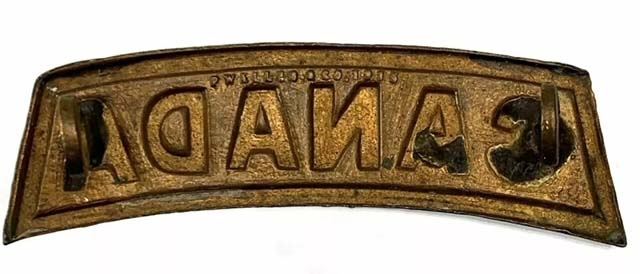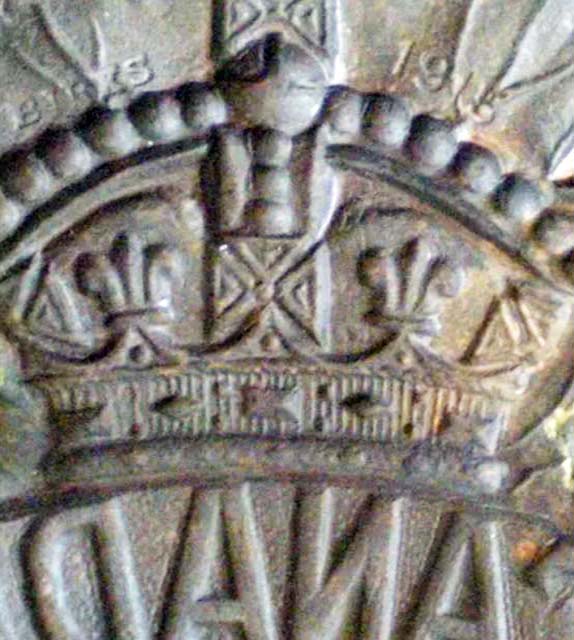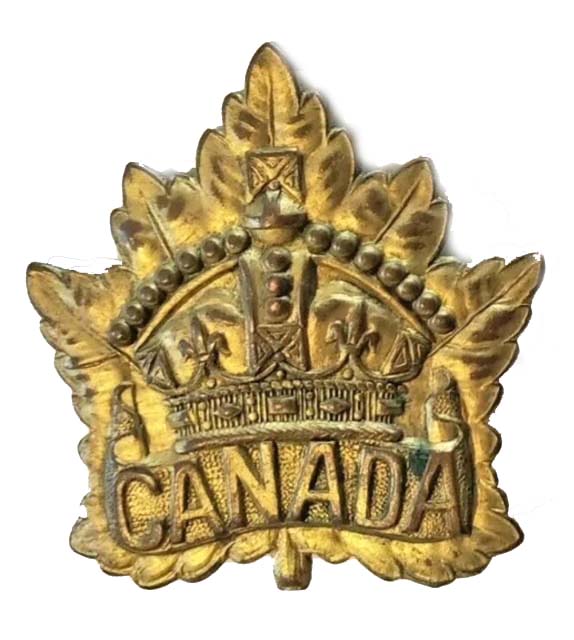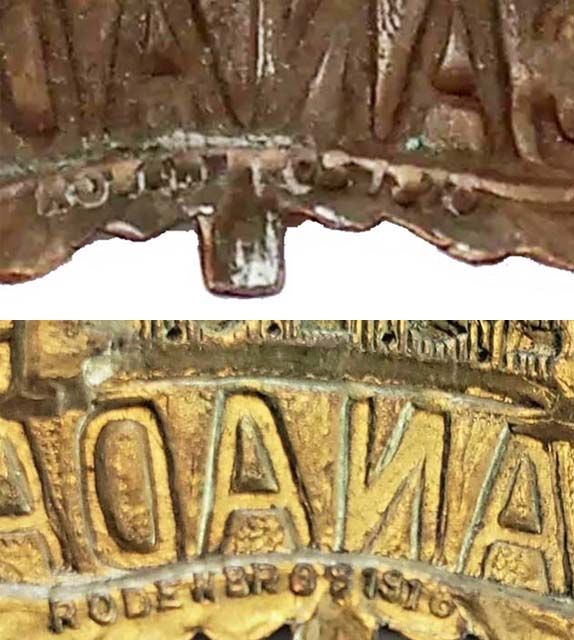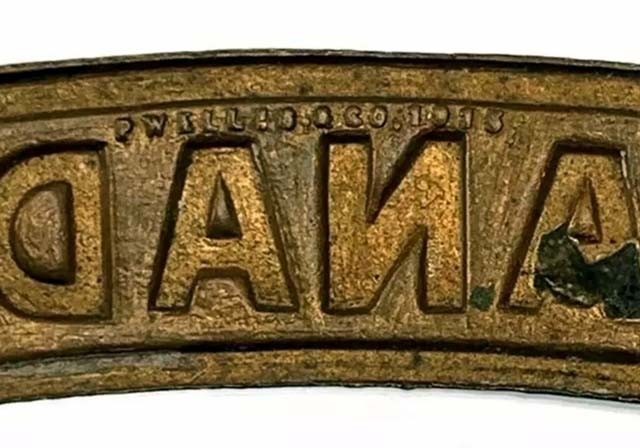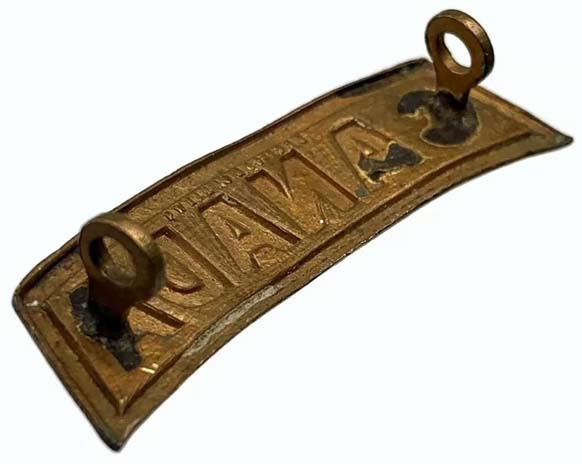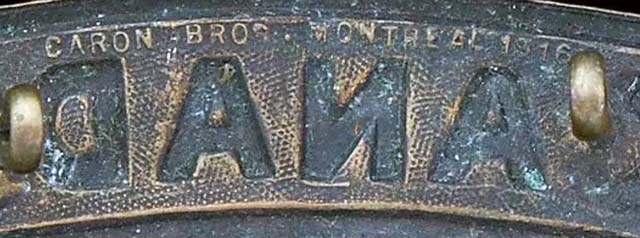Canada’s entry into the war alongside the Allied Forces and against the Central Empires undoubtedly brought a significant additional weight to the balance of the forces involved. Canada relied on the militia and a weak regular army in 1914, but the military personnel that was assembled during the First World War not stop growing throughout the duration of the conflict.
More than 30,000 men enlisted at the call of King George V in the first months of the war and embarked for Europe within the Canadian Expeditionary Force. There was an influx of several thousands of volunteers in Québec, which we will come back to in another article. A total of 619,636 men enlisted during those years, of which 424,589 served in Europe. Their uniforms, their equipments, but above all their badges held the attention of their comrades from other nations and of civil populations, because of the particularities of their symbolic strength.
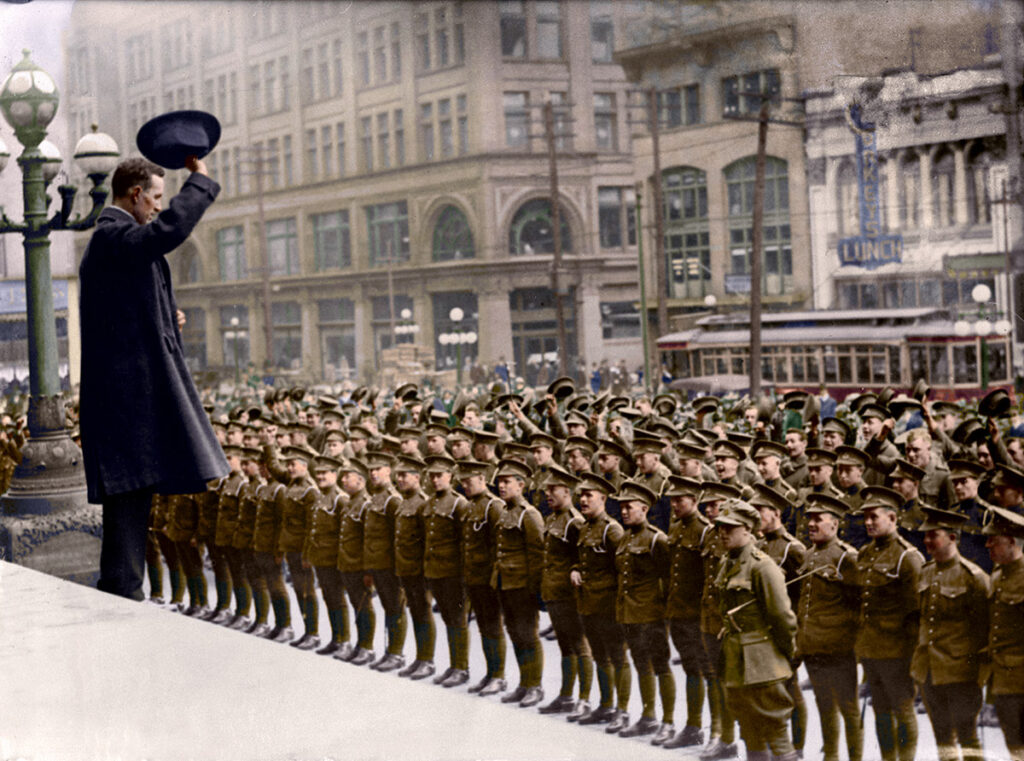
This first study will focus on the General Service Badge, or Maple Leaf Badge, its genesis, its manufacture and its production.It is planned to share other studies on particular units endowed with specific own badges and whose name, origin, relationship with a European country, or commitment, are particular points of interest for historians as well as for readers.
The diversity of Canadian battalions
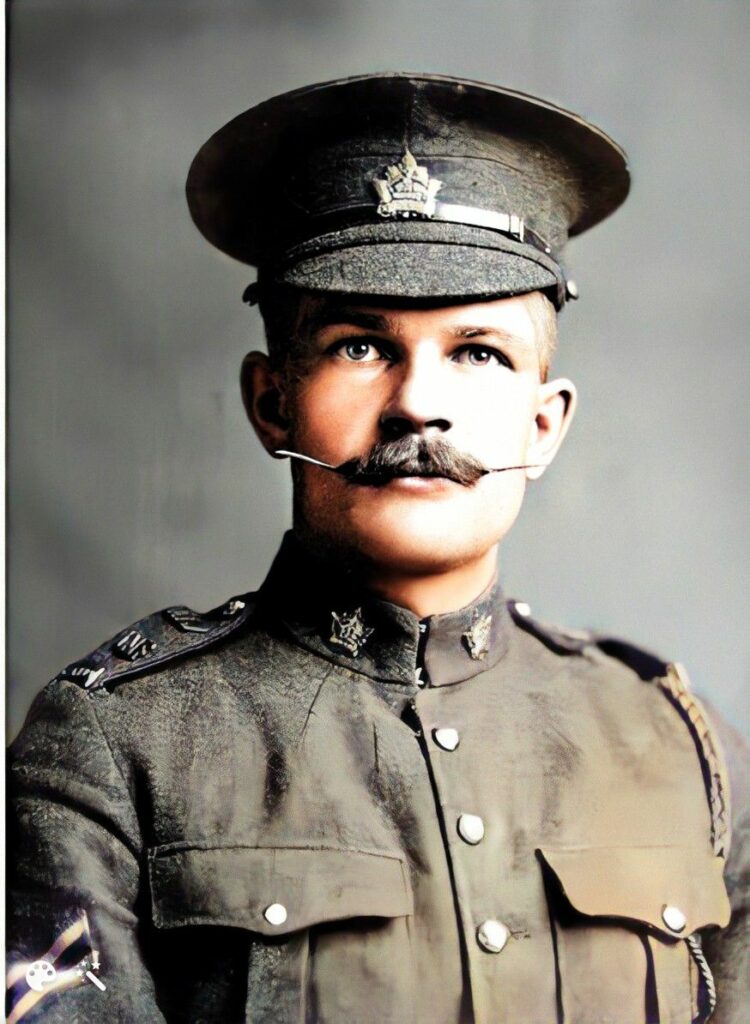
From the earliest days of the mobilization of volunteers for overseas service in 1914, the Canadian authorities opted for the battalion format, which differs somewhat from the British scheme, the latter being based on the regiment, even if the regiment is also organized in battalions, sometimes up to more than 20 : regular ones {active} , territorial ones {Reserve Army} and later battalion of volunteers {Service} for the Infantry. Canadian battalions are assigned a unique number. It was planned to endow each battalion with a specific badge, a maple leaf-shaped badge, numbered, captioned and illustrated, in order to federate the volunteers and develop their esprit de corps. At the same time, the government decided that a general badge would be worn, by default, everywhere and by all, in the absence of a specific badge. Numerous contemporary pictures confirm that this badge is very present on the Western Front and often even worn in the same way and in almost as numerous instances as the specific insignia of units. It is the insignia known as the General List insignia of the Canadian Corps. It was for a long time a great find for collectors in flea markets in the villages of Northern France, or on the stands of arms exchanges. Those times are now over and this badge is now much sought after.
The Maple Leaf
Canada adopted the national emblem of the Maple leaf in 1848, under the action of a literary association in Toronto, in the province of Ontario. In fact, the appearance of the maple leaf as an emblem even seeems to date from 1834, when the French-speaking association of St-John the Baptist, one of the chief concerns of which was the promotion of its cultural and linguistic heritage, decided to make it its emblem. The idea was then taken up by the first mayor of Québec, Jacques Vigier, who, during his mandate, consecrated the maple, king of the Canadian forest, as a symbol of the unity of Canadians. Two years later, the newspaper « Le Canadien » proposed to make the maple leaf the national symbol.The development of this idea culminated with the official proposal from a Toronto society, The Maple Leaf, to make this leaf the national emblem. From then on, this representation is generalized , and we note the appearance of the first military badge with a maple leaf background in 1860. It is later found on the coats-of-arms of the Ontario and Quebec provinces, as well as on coins ; moreover, the adoption of the national anthem « The Maple Leaf forever » was the consecration of this symbol.
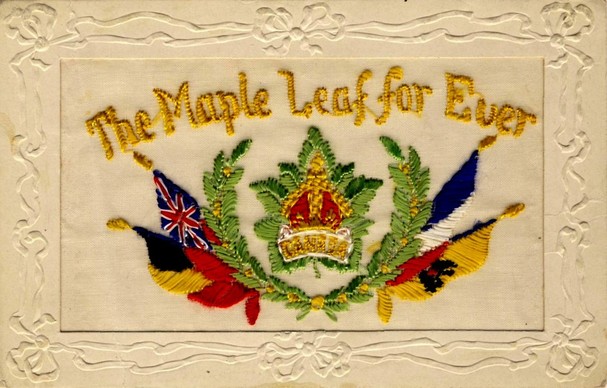
The military badge of the Canadian Expeditionary Force
In his reference work, Chris Broooker specifies moreover : « Although general service badges dating from 1914 were produced, it is difficult to know whether if they were produced before or after the departure of the first contingent in 1914. The cost of the maple leaf badge, the collar insignia and the shoulder titles was 10 cents per set, and was available at public expense at equipment stores {like tailor shops]. From the number of models and varieties, it would appear that generic maple leaf badges have been issued, for the most part or the totality, of the CEF units. From 1915, the government also provided in addition to General Service badges, numbers and shoulder titles such as INF {infantry} CFA {Canadian Field Artillery}, CGA {Heavy Artillery} (1)
For its part, the distinctive numbered badge was purchased by the volunteer or paid for by contributions from benefactors, charitable actions and other collections made in the province, district or town of origin. It also seems that some units did not perceive specific insignia in sufficent numbers. Those units then often wore the general badge.
(1) WWI Canadian Expeditionary Force Badges, Chris Brooker, 1st Edition 2018 (https://www.canadiansoldiers.com/insignia/brookerguide.htm)
The Canadian General Service Badge, or General List Badge, has a distinctive shape and design. The background and the base of the copper badge represent a stylized maple leaf, on the center of which one finds the King’s crown surmounting the mention « Canada ». The badge was available in a standard format for caps and collars, the latter being worn in pairs.The set was completed by a pair of copper shoulder titles, showing the name CANADA on a solid, curved background.
We find the badge in different colours and fabrications. We will mention P.W. Ellis & Co 1914, P.W. Ellis 1915 ; CARON BROS MONTREAL 1915 ; CARON BROS MONTREAL 1916 ; BIRKS 1915 ; GEO H. LEES & CO 1915 ; GEO H. LEES & CO 1916 ; RODEN BROS TORONTO ; RODEN BROS 1915 ; RODEN BROS MONTREAL 1915 ; RODEN BROS 1916 ; RODEN BROS TORONTO 1918 ; GEORGES F. HEMSLEY ; SCULLY MONTREAL…
However , it should be noted that a significant number of badges were also manufactured in the United Kingdom and more particularly in England. They are therefore sometimes found with English markings like J.W. DINGLEY BIRMINGHAM ; J.W. TIPTAFT & SON LTD BIRMINGHAM
Conclusion
The outbreak of the First World War in August 1914 constituted an incredible earthquake in Europe, but also on all the continents of the planet. Military contingents flow from The East, from Africa, Asia and America. Each of them wore its own uniforms, headgears and other attributes with pride and courage.
Canadians were no exception to the rule and would, in particular with the wearing of their cap or colllar badges and their shoulder titles, clearly display their origin. The Canadian forest and its king, the Maple-tree, accompanied those valiant soldiers under the symbol of the Maple leaf, which has become the national symbol and that of the CEF’s commitment on the Western Front, as on other engagement theaters. The insignia , with its maple leaf background, would remain present in the Canadian Forces, in different versions, between the two wars, during the second World War and up to the present day.
Translated by Jacques Paltani
